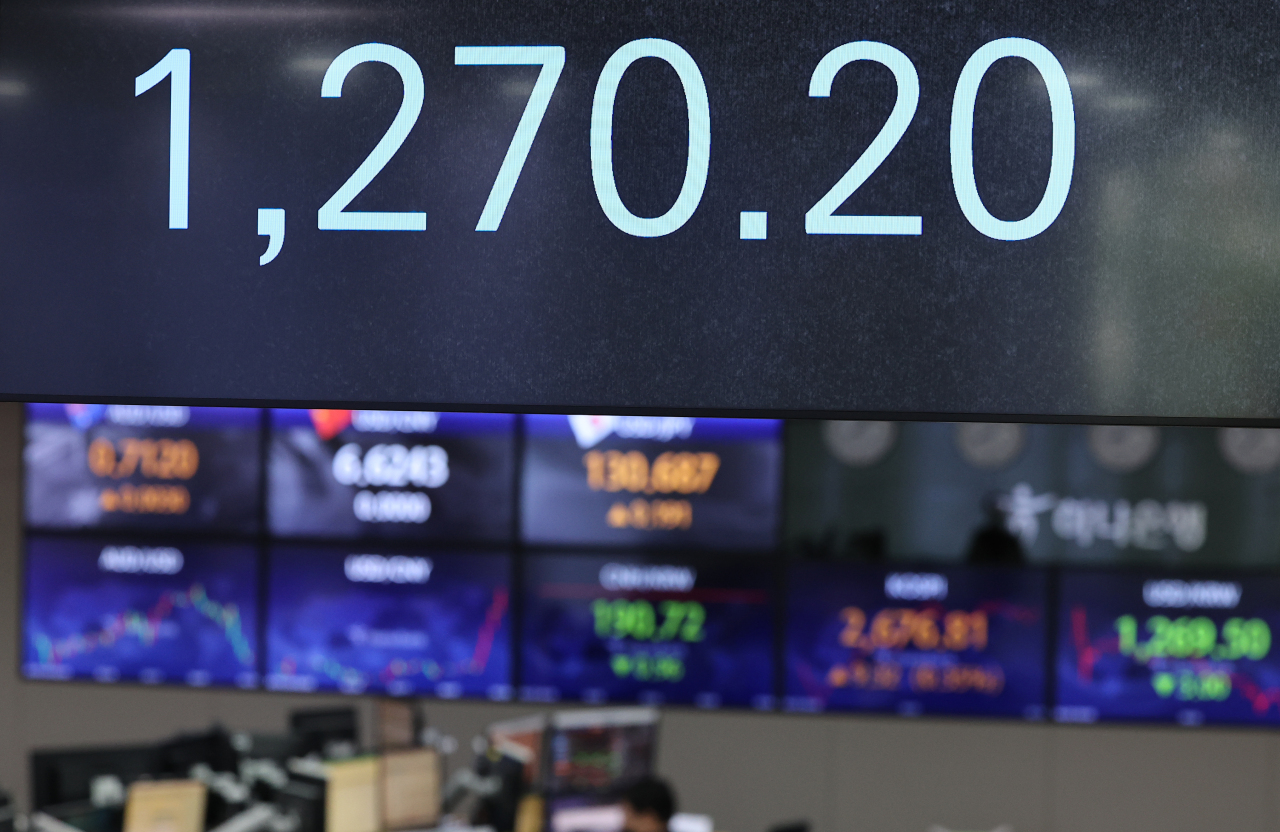SEJONG -- Policymakers repeatedly sent alerts to the foreign exchange market last week as the Korean currency sharply lost its value against the US dollar. The greenback surpassed 1,250 won in the wake of investors’ preference in safe havens amid expanding global uncertainty, which include Russia’s Ukraine invasion, high raw materials prices and moves to raise the interest rate in major countries.
This is not the first time that increased volatility in won-dollar rates have rung bells. In fact, bells ring, perhaps too often, whenever there’s slight changes in the value of the Korean won.
When the local currency was strong against the dollar, trading under 1,100 won, businesses warned that the nation’s export-oriented companies might lose price competitiveness in their outbound shipments.
Some even urged the financial authority to intervene in the currency market to curb the won’s value, stressing that exports take up a dominant portion of the nation’s gross domestic product.
Now, things have changed completely to the opposite. Retail investors fear suffering from possible side effects from the cheap won.
They worry about active capital outflow from the stock market that the Korean bourse could no more be attractive to overseas investors as the market capitalization is falling in tandem with the cheap local currency.
The market sensitivity towards exchange rate volatility appears to have come from past experiences -- the hard lesson Koreans went through 25 years ago.
During 1997-1998 Asian financial crisis, the Korean won's value plummeted to 1,995 won against the dollar.
Years before the 1997 Asian currency crisis, the dollar traded under 1,000 won. Korea’s exports were brisk even under the strong local currency.
Though there is no optimum level for the won-dollar rate officially, it generally ranged between 1,030 won and 1,290 won over the past two decades after that crisis.
Some media outlets have issued the possibility that the dollar price could possibly touch the 1,300 won mark, citing some market insiders in the brokerage industry.
But the chances of seeing the era of 1,300 won per dollar appears to be low, given the sufficient foreign currency reserves held by the government, stable sovereign ratings and financial soundness among commercial banks and conglomerates.
Fending off market worries, Vice Finance Minister Lee Eog-weon also said that investment in local stocks had been steady, even under a past situation that the US benchmark interest rate has outstripped that of Korea.
Lee stressed that more significant issues are fundamentals in economy, the nation’s creditworthiness in the internal stage and capability to weather external shocks.
He, nevertheless, publicized the financial authority’s stance to stabilize the currency market if the won-dollar volatility expands, reiterating the policy direction, suggested by Finance Minister Hong Nam-ki on the previous day.
The point is that high volatility in exchange rates would certainly be a negative factor for the economy. To prevent it, policymakers sometimes intervene in the market by publicly saying that the government will “closely monitoring of the won-dollar rates.”
A weaker won isn‘t always be something bad.
Some research analysts say that the strong dollar would provide timely opportunity for foreigners to buy Korean stocks at discounted prices.
The price of the dollar fell on Friday to close at 1,255.9 won, down 1.3 percent from 1,272.50 won a trading session earlier.
(
kys@heraldcorp.com)







![[Weekender] Korea's traditional sauce culture gains global recognition](http://res.heraldm.com/phpwas/restmb_idxmake.php?idx=644&simg=/content/image/2024/11/21/20241121050153_0.jpg)
